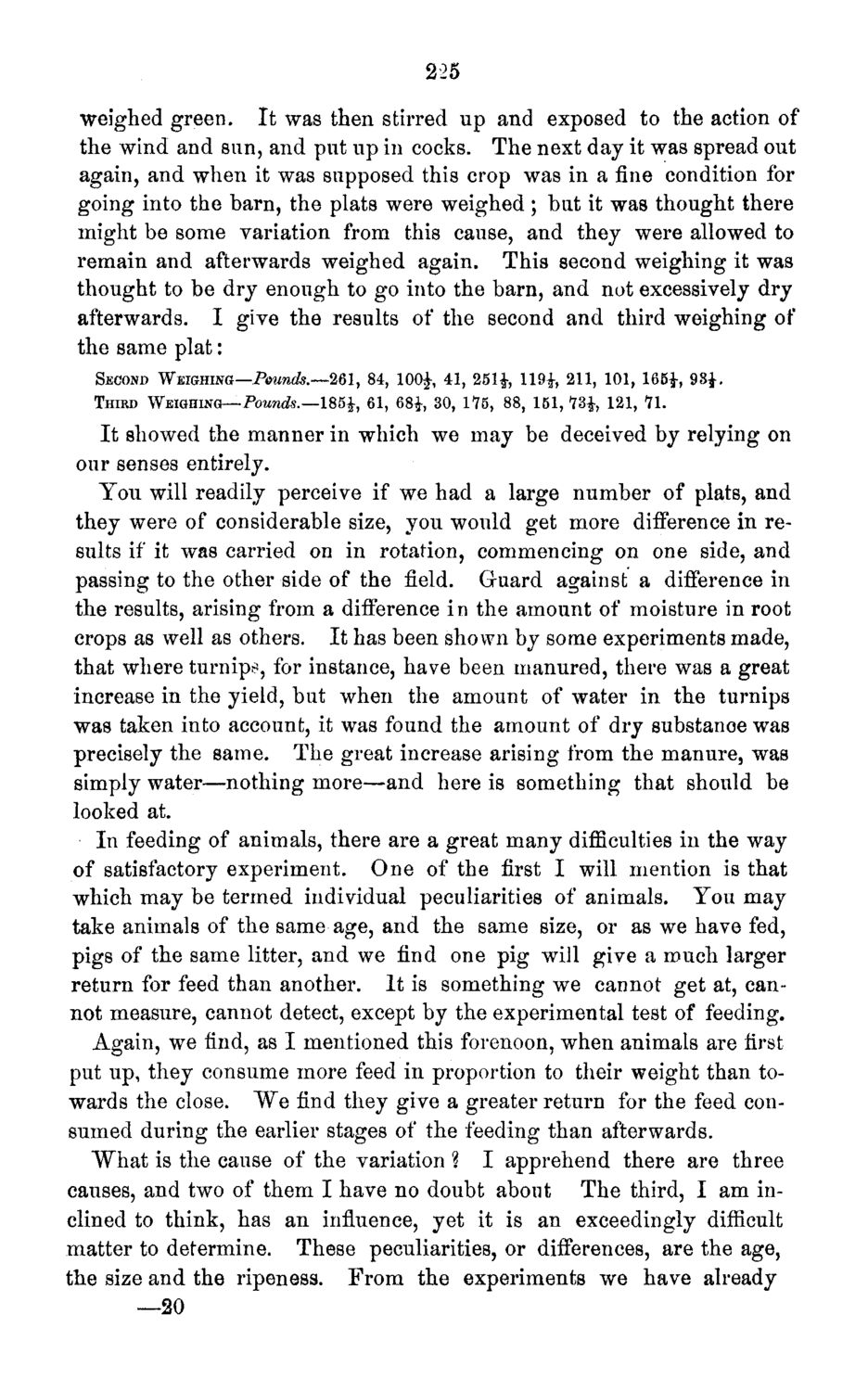| |
| |
Caption: Board of Trustees Minutes - 1871
This is a reduced-resolution page image for fast online browsing.

EXTRACTED TEXT FROM PAGE:
225 weighed green. It was then stirred up and exposed to the action of the wind and sun, and put up in cocks. The next day it was spread out again, and when it was supposed this crop was in a fine condition for going into the barn, the plats were weighed ; but it was thought there might be some variation from this cause, and they were allowed to remain and afterwards weighed again. This second weighing it was thought to be dry enough to go into the barn, and not excessively dry afterwards. I give the results of the second and third weighing of the same plat: SECOND WEIGHING—Pounds.—261, 84, 100J, 41, 251£, 119£, 211, 101, 165£, 98£. THIRD WEIGHING— Pounds.—1%^ 61, 68i, 30, 175, 88, 151, 73£, 121, 11. It showed the manner in which we may be deceived by relying on our senses entirely. You will readily perceive if we had a large number of plats, and they were of considerable size, you would get more difference in results if it was carried on in rotation, commencing on one side, and passing to the other side of the field. Guard against a difference in the results, arising from a difference in the amount of moisture in root crops as well as others. It has been shown by some experiments made, that where turnips, for instance, have been manured, there was a great increase in the yield, but when the amount of water in the turnips was taken into account, it was found the amount of dry substance was precisely the same. The great increase arising from the manure, was simply water—nothing more—and here is something that should be looked at. In feeding of animals, there are a great many difficulties in the way of satisfactory experiment. One of the first I will mention is that which may be termed individual peculiarities of animals. You may take animals of the same age, and the same size, or as we have fed, pigs of the same litter, and we find one pig will give a much larger return for feed than another. It is something we cannot get at, cannot measure, cannot detect, except by the experimental test of feeding. Again, we find, as I mentioned this forenoon, when animals are first put up, they consume more feed in proportion to their weight than towards the close. We find they give a greater return for the feed consumed during the earlier stages of the feeding than afterwards. "What is the cause of the variation % I apprehend there are three causes, and two of them I have no doubt about The third, I am inclined to think, has an influence, yet it is an exceedingly difficult matter to determine. These peculiarities, or differences, are the age, the size and the ripeness. From the experiments we have already —20
| |